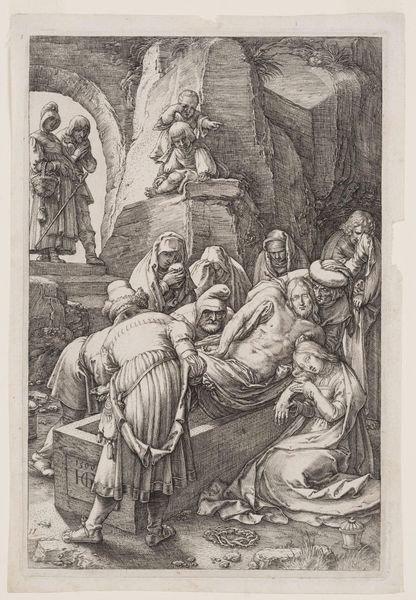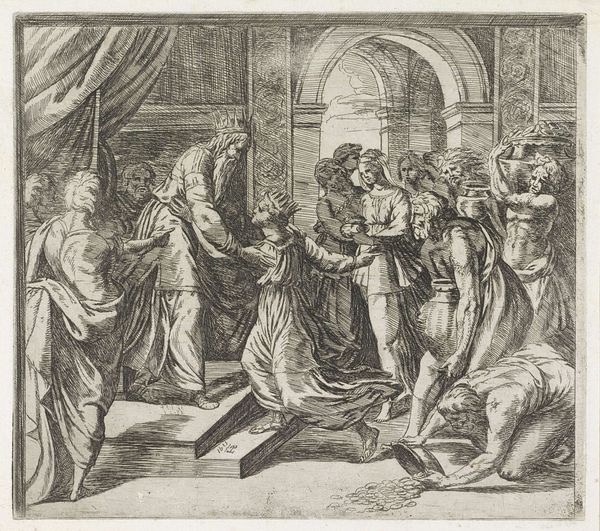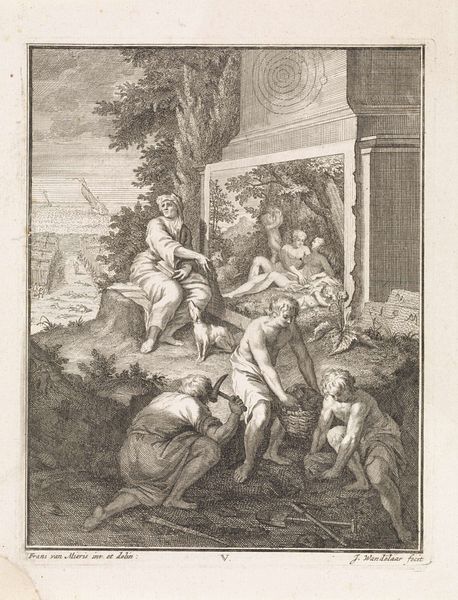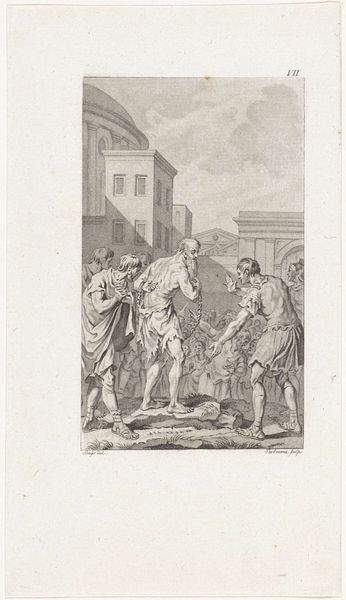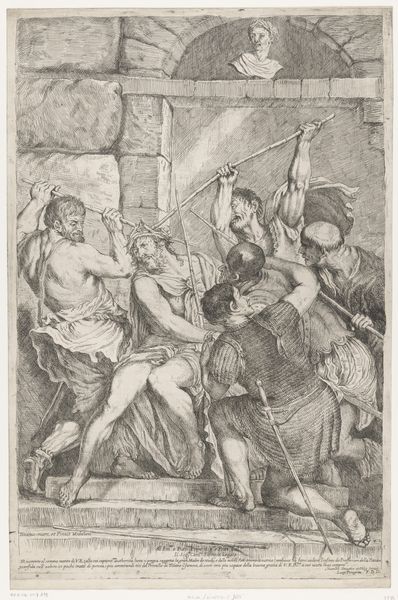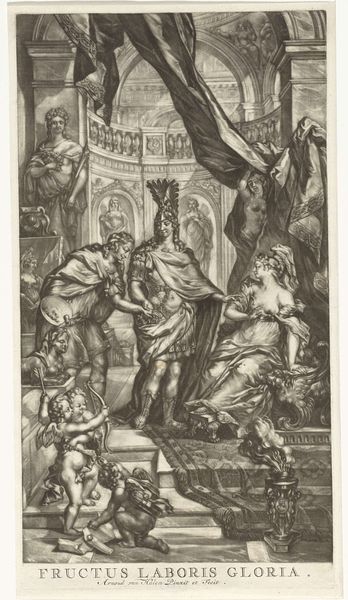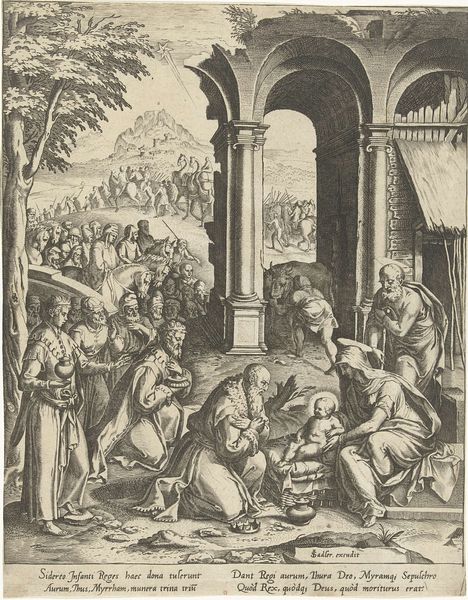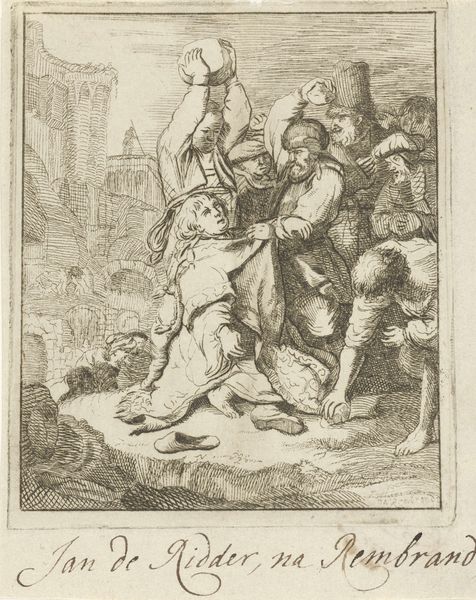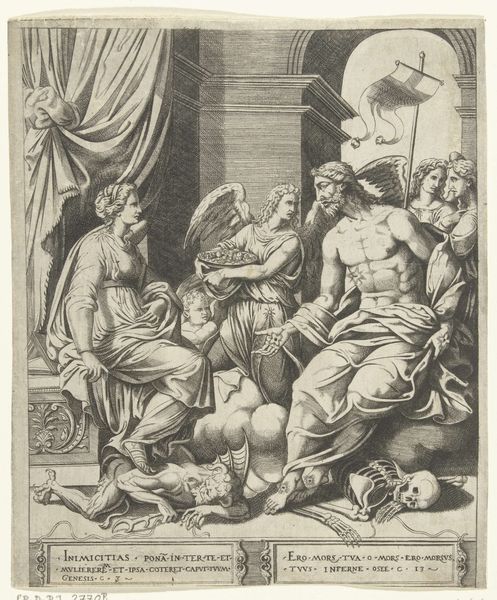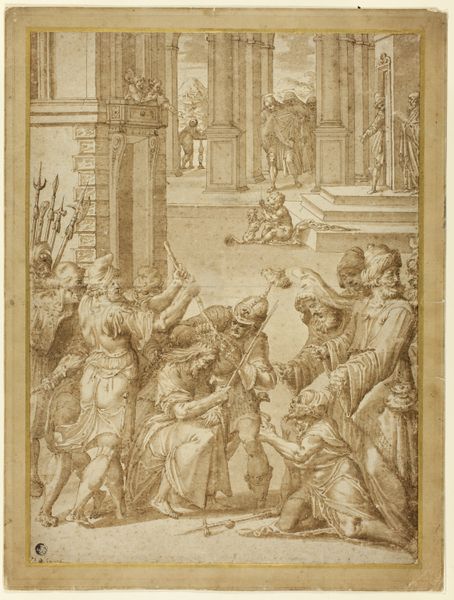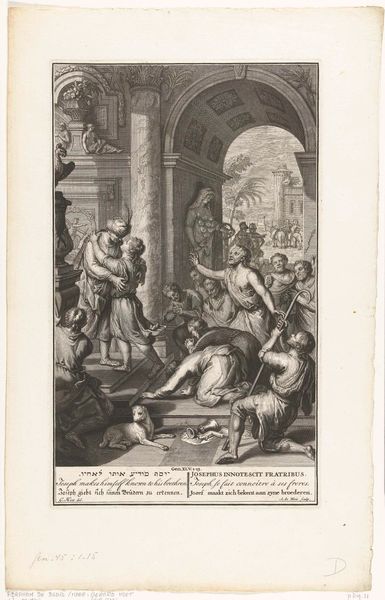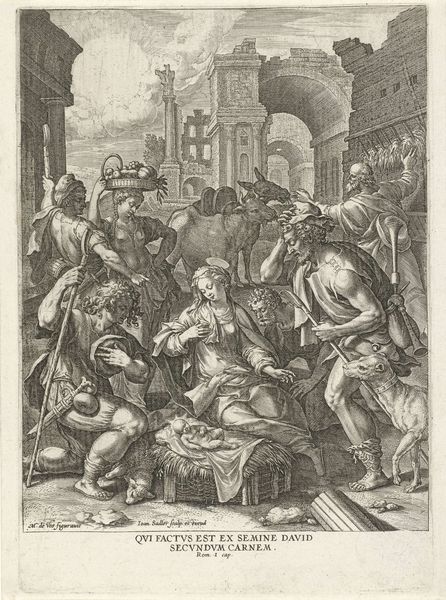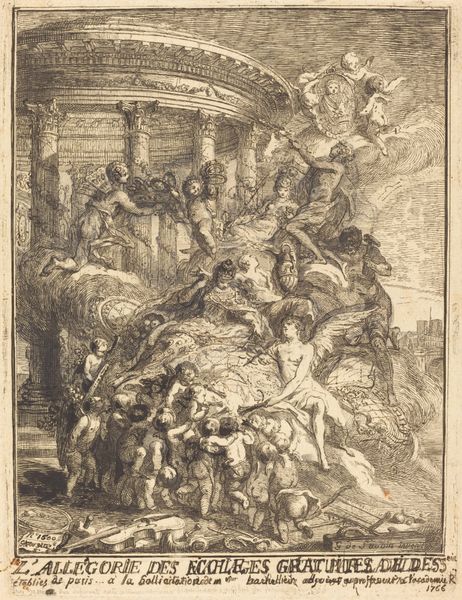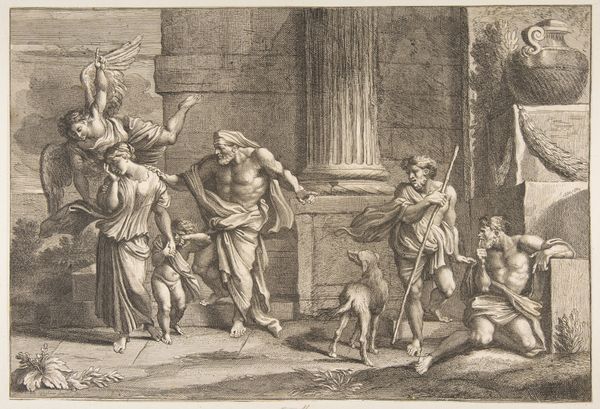![The Challenge [right] by Gabriel de Saint-Aubin](/_next/image?url=https%3A%2F%2Fd2w8kbdekdi1gv.cloudfront.net%2FeyJidWNrZXQiOiAiYXJ0ZXJhLWltYWdlcy1idWNrZXQiLCAia2V5IjogImFydHdvcmtzLzE4YzlmNzc1LWE1NjAtNGIyYS1iM2VhLWE1YTQzN2I4NTMzYy8xOGM5Zjc3NS1hNTYwLTRiMmEtYjNlYS1hNWE0MzdiODUzM2NfZnVsbC5qcGciLCAiZWRpdHMiOiB7InJlc2l6ZSI6IHsid2lkdGgiOiAxOTIwLCAiaGVpZ2h0IjogMTkyMCwgImZpdCI6ICJpbnNpZGUifX19&w=3840&q=75)
drawing, print, etching, ink, engraving
#
pen and ink
#
drawing
#
ink drawing
#
narrative-art
#
baroque
#
pen drawing
# print
#
etching
#
figuration
#
ink
#
history-painting
#
engraving
Copyright: National Gallery of Art: CC0 1.0
Editor: Here we have Gabriel de Saint-Aubin's "The Challenge [right]," created around 1760 using etching and engraving techniques. There’s something dramatic about this scene, a clear hierarchy implied by the central figures. How do you interpret this work? Curator: Considering the title and the historical context, particularly the prevailing social structures of the time, the "challenge" could be read as a moment of resistance against patriarchal authority. The woman kneeling, chained, represents a subjugated figure, yet the scene’s staging – the gazes, gestures – suggest a potential for disruption. Do you notice how the architectural setting, the classical columns, evokes a sense of established power? Editor: Yes, absolutely. It feels as though she's been put on trial or something similar, held in a staged public setting to highlight the consequences of some transgression. I guess, maybe, how would you explore a feminist reading of this work, going beyond the surface-level narrative? Curator: Let’s consider her vulnerability, contrasted with the men’s stances of authority. It calls into question the accepted narratives around power dynamics. Saint-Aubin gives us not simply a historical scene, but a study in gendered power, its performance and, crucially, its potential subversion. One might ask, what actions, perhaps outside of what is shown in the print, led this figure to be subjugated. Editor: It's thought-provoking to consider the unshown parts of the story to reflect on what happened and what could happen. I hadn't considered that potential for subversion initially. Thanks for expanding my view! Curator: My pleasure! Examining art through an intersectional lens lets us re-evaluate historical narratives. It’s about interrogating not just what we see, but the structures of power that frame what is visible.
Comments
No comments
Be the first to comment and join the conversation on the ultimate creative platform.
